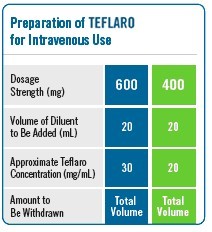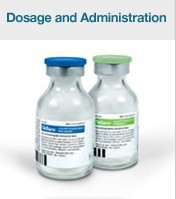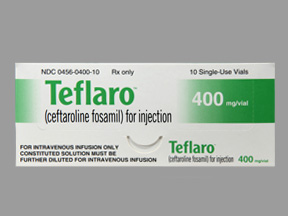10月29日美国FDA批准一种新的注射用头孢类抗生素——头孢他洛林酯(ceftaroline fosamil,商品名Teflaro),该药用于治疗成人社区获得性细菌性肺炎(CABP)和急性细菌性皮肤和软组织感染(ABSSSI),包括耐甲氧西林金黄色葡萄球菌(MRSA)所致感染。
这两种适应症都属于严重并可能威胁生命的感染,尤其是社区获得性肺炎发病率和死亡率都较高。据估计美国每年有560万病例,给国家医疗保健体系带来沉重负担,数据显示每年此症就医患者达450万人次,其中有110万人需要住院治疗,支出高达100亿美元。通常需用抗生素治疗,但细菌耐药问题日见突出,因此迫切需用研究开发新药。
在4项Ⅲ期临床试验(CABP试验和ABSSSI试验各两项)中对头孢他洛林酯的安全性和效果作了评估,参与的患者年龄在18岁以上(含18岁)。在这两项试验中,头孢他洛林酯可与万古霉素加氨曲南匹敌。在以头孢他洛林酯治疗的患者中最常见的副作用包括腹泻、恶心和皮疹。对头孢类抗生素过敏的病人不适宜使用头孢他洛林酯。
头孢他洛林酯由日本武田制药公司开发,美国Forest Laboratories获得市场授权
Manufacturer:
Forest Laboratories
Pharmacological Class:
Antibiotic (cephalosporin).
Active Ingredient(s):
Ceftaroline fosamil 400mg/vial, 600mg/vial; powder for IV infusion after reconstitution.
Indication(s):
Susceptible bacterial community-acquired pneumonia and acute skin and skin structure infections.
Pharmacology:
Ceftaroline, a broad-spectrum semisynthetic cephalosporin for intravenous administration, is indicated for treating acute bacterial skin and skin structure infections caused by S. aureus (both methicillin-resistant and methicillin-susceptible strains), S. pyogenes, S. agalactiae, E. coli, K. pneumoniae, and K. oxytoca. It is also indicated for treating community-acquired pneumonia caused by S. pneumoniae (including cases with concurrent bacteremia), S. aureus (methicillin-susceptible isolates only), H. influenzae, K. pneumoniae, K. oxytoca, and E. coli.
Ceftaroline is active against both gram (–) and gram (+) bacteria. It acts by binding to essential penicillin-binding proteins. It is not active against gram (–) bacteria that produce extended-spectrum beta-lactamases. Some isolates resistant to other cephalosporins may be susceptible to ceftaroline.
During intravenous infusion, ceftaroline fosamil is converted by phosphatase in the plasma to the bioactive form, ceftaroline. It is not a substrate of the CYP450 enzyme system, so dosage adjustments are not necessary in hepatic dysfunction, and drug interactions due to interferences with metabolic enzymes are not likely. Both the active drug and its metabolites are eliminated by the kidneys by glomerular filtration; therefore, an evaluation of renal function is essential for proper dosing.
Clinical Trials:
Two studies involving 1396 adults with complicated skin and skin structure infections were conducted to compare ceftaroline to vancomycin plus aztreonam. An analysis was conducted in 797 patients with lesions ≥75cm2 and either major abscess, wound infection, or deep/extensive cellulitis. The analysis evaluated responder rates based on the achievement of both cessation of lesion spread and absence of fever on day 3. In one trial, the number of responders was 148 of 200 for ceftaroline, and 135 of 209 for vancomycin + aztreonam. In the other trial, the number of responders for ceftaroline was again 148 of 200, compared to 128 out of 188 for vancomycin + aztreonam.
Two trials were conducted to compare ceftaroline to ceftriaxone in the treatment of 1231 adults with community-acquired bacterial pneumonia (CABP). Patients with new or progressive pulmonary infiltrates and signs and symptoms of CABP with the need for hospitalization and IV therapy were enrolled. In study 1, two doses of oral clarithromycin (500mg every 12hours) were given to patients as adjunctive therapy starting on the first day. Patients with known or suspected MRSA were excluded from both trials. Among all subjects who received any amount of study drug, the 30-day all-cause mortality rates were 1.8% for the ceftaroline group and 2% for the ceftriaxone group.
Legal Classification:
Rx
Adults:
≥18yrs: Give by IV infusion over 1hour. Treat skin and skin structure for 5–14 days; treat pneumonia for 5–7days. CrCl >50mL/minutes: 600mg every 12hours. Renal impairment (CrCl >30–≤50mL/min): 400mg every 12hours; (CrCl ≥15–≤30mL/min): 300mg every 12hours; ESRD (including hemodialysis): 200mg every 12hours (dose after dialysis on dialysis days).
Children:
<18yrs: not recommended.
Warnings/Precautions:
Penicillin or other allergy. GI disease (especially colitis). Pregnancy (Cat.B). Nursing mothers.
Adverse Reaction(s):
GI upset, rash, (+) Coombs’ test (evaluate for hemolytic anemia if occurs), pseudomembranous colitis, superinfection.
How Supplied:
Vials—1, 10
Last Updated:
2/3/2011
TEFLARO® vials should be stored refrigerated at 2˚C to 8˚C (36˚F to 46˚F). Unrefrigerated, unreconstituted TEFLARO can be stored at temperatures not exceeding 25˚C (77˚F) for no more than 7 days1
Aseptic technique must be followed in preparing the infusion solution. Contents of a TEFLARO vial should be constituted with 20 mL Sterile Water for Injection, USP1 (see table below)

Constituted solution must be further diluted in 250 mL before infusion. Appropriate infusion solutions include:
0.9% Sodium Chloride Injection, USP (normal saline)
5% Dextrose Injection, USP
2.5% Dextrose Injection, USP and 0.45% Sodium Chloride Injection, USP
Lactated Ringer’s Injection, USP
Constitution time is less than 2 minutes. Mix gently to constitute and check to see that the contents have dissolved completely. Parenteral drug products should be inspected visually for particulate matter prior to administration1
The color of TEFLARO infusion solutions ranges from clear, light to dark yellow depending on the concentration and storage conditions
When stored as recommended, the product potency is not affected
Studies have shown that the constituted solution in the infusion bag should be used within 6 hours when stored at room temperature or within 24 hours when stored under refrigeration at 2 to 8˚C (36 to 46˚F)1
The compatibility of TEFLARO with other drugs has not been established. TEFLARO should not be mixed with or physically added to solutions containing other drugs
INDICATIONS AND USAGE
TEFLARO is indicated for the treatment of community-acquired bacterial pneumonia (CABP) caused by susceptible isolates of the following Gram-positive and Gram-negative microorganisms: Streptococcus pneumoniae (including cases with concurrent bacteremia), Staphylococcus aureus (methicillin-susceptible isolates only), Haemophilus influenzae, Klebsiella pneumoniae, Klebsiella oxytoca, and Escherichia coli.
TEFLARO is also indicated for the treatment of acute bacterial skin and skin structure infections (ABSSSI) caused by susceptible isolates of the following Gram-positive and Gram-negative microorganisms: Staphylococcus aureus (including methicillin-susceptible and -resistant isolates), Streptococcus pyogenes, Streptococcus agalactiae, Escherichia coli, Klebsiella pneumoniae, and Klebsiella oxytoca.
To reduce the development of drug-resistant bacteria and maintain the effectiveness of TEFLARO and other antibacterial drugs, TEFLARO should be used to treat only ABSSSI or CABP that are proven or strongly suspected to be caused by susceptible bacteria. Appropriate specimens for microbiological examination should be obtained in order to isolate and identify the causative pathogens and to determine their susceptibility to ceftaroline. When culture and susceptibility information are available, they should be considered in selecting or modifying antibacterial therapy. In the absence of such data, local epidemiology and susceptibility patterns may contribute to the empiric selection of therapy.
IMPORTANT SAFETY INFORMATION
Contraindications
TEFLARO is contraindicated in patients with known serious hypersensitivity to ceftaroline or other members of the cephalosporin class. Anaphylaxis and anaphylactoid reactions have been reported with ceftaroline.
Warnings and Precautions
Hypersensitivity Reactions
Serious and occasionally fatal hypersensitivity (anaphylactic) reactions and serious skin reactions have been reported with beta-lactam antibacterials. Before therapy with TEFLARO is instituted, careful inquiry about previous hypersensitivity reactions to other cephalosporins, penicillins, or carbapenems should be made. If this product is to be given to a penicillin- or other beta-lactam-allergic patient, caution should be exercised because cross sensitivity among beta-lactam antibacterial agents has been clearly established.
If an allergic reaction to TEFLARO occurs, the drug should be discontinued. Serious acute hypersensitivity (anaphylactic) reactions require emergency treatment with epinephrine and other emergency measures that may include airway management, oxygen, intravenous fluids, antihistamines, corticosteroids, and vasopressors as clinically indicated.
Clostridium difficile-associated Diarrhea
Clostridium difficile-associated diarrhea (CDAD) has been reported for nearly all systemic antibacterial agents, including TEFLARO, and may range in severity from mild diarrhea to fatal colitis. Careful medical history is necessary because CDAD has been reported to occur more than 2 months after the administration of antibacterial agents. If CDAD is suspected or confirmed, antibacterials not directed against C. difficile should be discontinued, if possible.
Direct Coombs’ Test Seroconversion
Seroconversion from a negative to a positive direct Coombs’ test result occurred in 120/1114 (10.8%) of patients receiving TEFLARO and 49/1116 (4.4%) of patients receiving comparator drugs in the four pooled Phase 3 trials. No adverse reactions representing hemolytic anemia were reported in any treatment group. If anemia develops during or after treatment with TEFLARO, drug-induced hemolytic anemia should be considered. If drug-induced hemolytic anemia is suspected, discontinuation of TEFLARO should be considered and supportive care should be administered to the patient if clinically indicated.
Development of Drug-Resistant Bacteria
Prescribing TEFLARO in the absence of a proven or strongly suspected bacterial infection is unlikely to provide benefit to the patient and increases the risk of the development of drug-resistant bacteria.
Adverse Reactions
In the four pooled Phase 3 clinical trials, serious adverse events occurred in 98/1300 (7.5%) of patients receiving TEFLARO and 100/1297 (7.7%) of patients receiving comparator drugs. Treatment discontinuation due to adverse events occurred in 35/1300 (2.7%) of patients receiving TEFLARO and 48/1297 (3.7%) of patients receiving comparator drugs with the most common adverse events leading to discontinuation being hypersensitivity for both treatment groups at a rate of 0.3% in the TEFLARO group and 0.5% in the comparator group.
No adverse reactions occurred in greater than 5% of patients receiving TEFLARO. The most common adverse reactions occurring in >2% of patients receiving TEFLARO in the pooled Phase 3 clinical trials were diarrhea, nausea, and rash.
Drug Interactions
No clinical drug-drug interaction studies have been conducted with TEFLARO. There is minimal potential for drug-drug interactions between TEFLARO and CYP450 substrates, inhibitors, or inducers; drugs known to undergo active renal secretion; and drugs that may alter renal blood flow.
Use in Specific Populations
TEFLARO has not been studied in pregnant women. Therefore, TEFLARO should only be used during pregnancy if the potential benefit justifies the potential risk to the fetus.
It is not known whether ceftaroline is excreted in human milk. Because many drugs are excreted in human milk, caution should be exercised when TEFLARO is administered to a nursing woman.
Safety and effectiveness in pediatric patients have not been established.
Because elderly patients, those ≥65 years of age, are more likely to have decreased renal function and ceftaroline is excreted primarily by the kidney, care should be taken in dose selection in this age group and it may be useful to monitor renal function. Dosage adjustment for elderly patients should therefore be based on renal function.
Dosage adjustment is required in patients with moderate (CrCl >30 to ≤50 mL/min) or severe (CrCl ≥15 to ≤30 mL/min) renal impairment and in patients with end-stage renal disease (CrCl <15 mL/min).
The pharmacokinetics of ceftaroline in patients with hepatic impairment have not been established.




